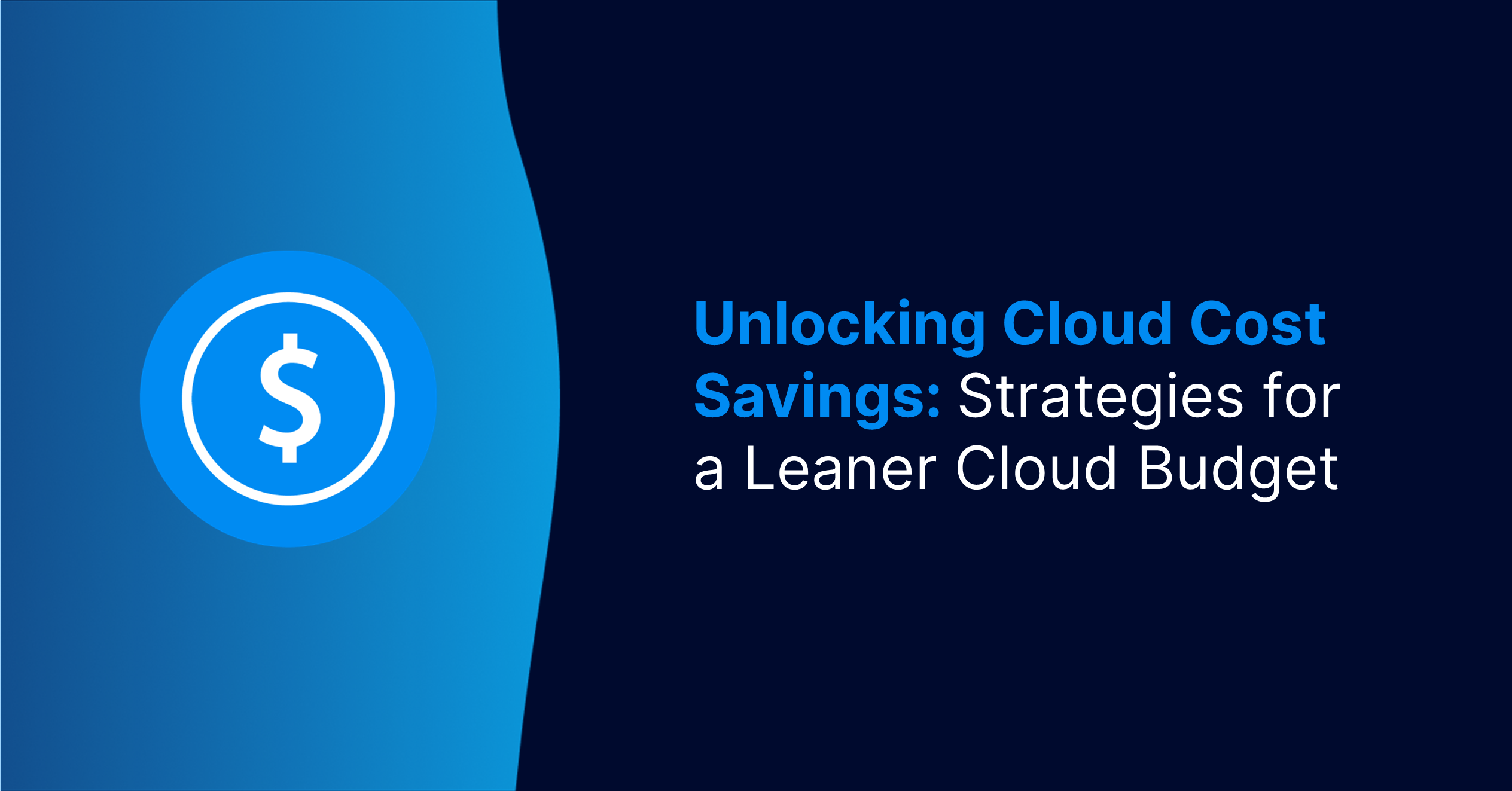Unlocking Cloud Cost Savings: Strategies for a Leaner Cloud Budget
In today’s fast-paced digital landscape, businesses are increasingly shifting their operations to the cloud. While the cloud offers unparalleled scalability and flexibi...
20/09/2023 | 2 Minute Read

In today’s fast-paced digital landscape, businesses are increasingly shifting their operations to the cloud. While the cloud offers unparalleled scalability and flexibility, it also comes with its share of expenses. Cloud cost savings have become a top priority for organisations looking to optimise their budgets and ensure long-term financial sustainability. In this blog, we’ll explore various strategies to help businesses maximise their cloud cost savings while maintaining operational efficiency.
Understanding Cloud Cost Components
Before diving into cost-saving strategies, let’s first understand the key components of cloud costs:
- Compute Costs: These costs are associated with virtual machines (VMs), containers, and serverless functions. They are typically based on the amount of CPU, memory, and storage resources used.
- Storage Costs: Cloud providers charge for storing data in the cloud, and costs can vary depending on the type of storage (e.g., standard, archival, or SSD) and the amount of data stored.
- Data Transfer Costs: Moving data in and out of the cloud incurs additional expenses, making it crucial to optimise data transfer.
- Networking Costs: Costs related to network resources, such as Virtual Private Clouds (VPCs) and load balancers, can also contribute to your overall bill.
- Additional Services: Cloud providers offer various services (e.g., databases, machine learning, and analytics) that can significantly impact costs.
Now, let’s explore effective strategies to achieve cloud cost savings:
- Rightsizing Resources: Regularly assess your resource usage to ensure you’re not over provisioning or underutilising resources. Rightsizing involves choosing the right size and type of instances for your workloads, which can lead to significant savings.
- Automated Scaling: Implement auto-scaling for your applications to dynamically adjust resources based on workload demand. This ensures optimal resource allocation and reduces unnecessary spending during low-traffic periods.
- Utilise Reserved Instances: Cloud providers offer reserved instance options, allowing you to commit to using specific resources for a predefined period at a discounted rate. This is a cost-effective choice for stable workloads.
- Implement Serverless Architectures: Serverless computing eliminates the need to manage infrastructure, and you only pay for the actual compute time used. This can lead to substantial savings for event-driven workloads.
- Optimise Data Storage: Implement data lifecycle policies to move infrequently accessed data to lower-cost storage options like archival storage. Regularly review and clean up unnecessary data.
- Monitor and Set Alerts: Implement robust monitoring and alerting systems to stay informed about resource usage and cost trends. Set up alerts to be notified when spending exceeds predefined thresholds.
- Cloud Cost Governance: Establish clear policies and budget limits for different teams or projects within your organisation. Cloud cost governance helps control spending and promotes accountability.
- Leverage Cloud Cost Management Tools: Invest in cloud cost management tools and services provided by cloud providers or third-party vendors to gain visibility into your spending and optimise costs effectively.
- Continuous Optimisation: Cloud cost savings should be an ongoing process. Regularly review and adjust your strategies as your workloads and business needs evolve.
- Partner with Experts: To navigate the complexities of cloud cost optimization, consider partnering with seasoned experts such as Deimos. Their expertise can provide invaluable guidance in achieving sustainable savings and maximising the benefits of your cloud investments.
Cloud cost savings are achievable through a combination of smart resource management, optimisation strategies, and a culture of cost-consciousness. By implementing these strategies and continuously monitoring your cloud spending, you can unlock significant cost savings while ensuring that your business remains agile and competitive in the digital age. Remember that while cost savings are essential, they should not compromise the performance and security of your cloud-based applications and services. For a professional Cloud Cost Assessment, click here.